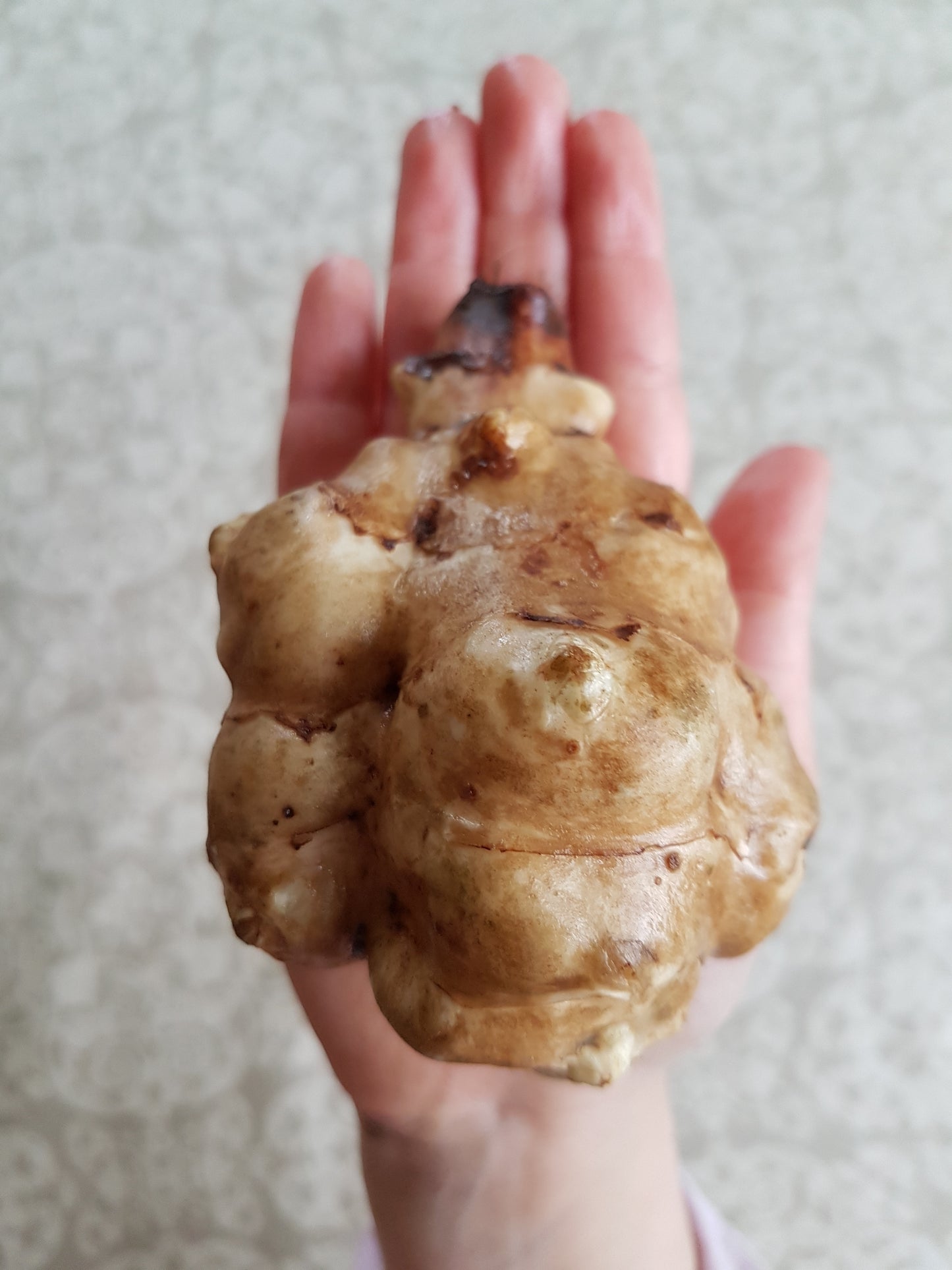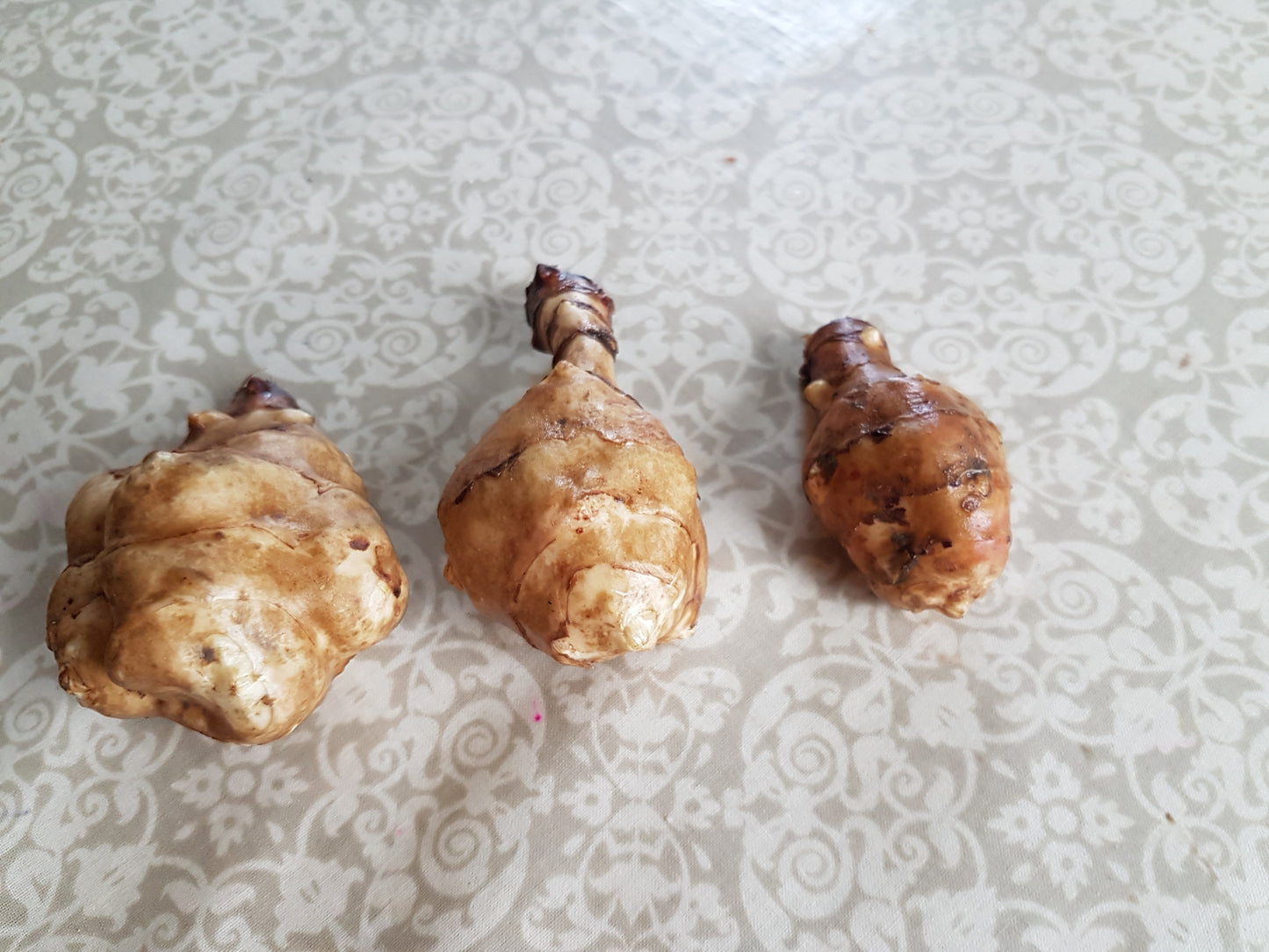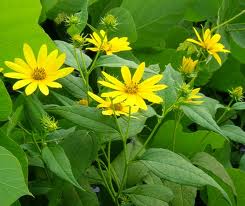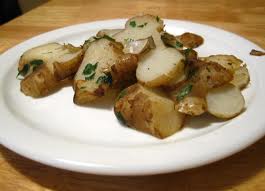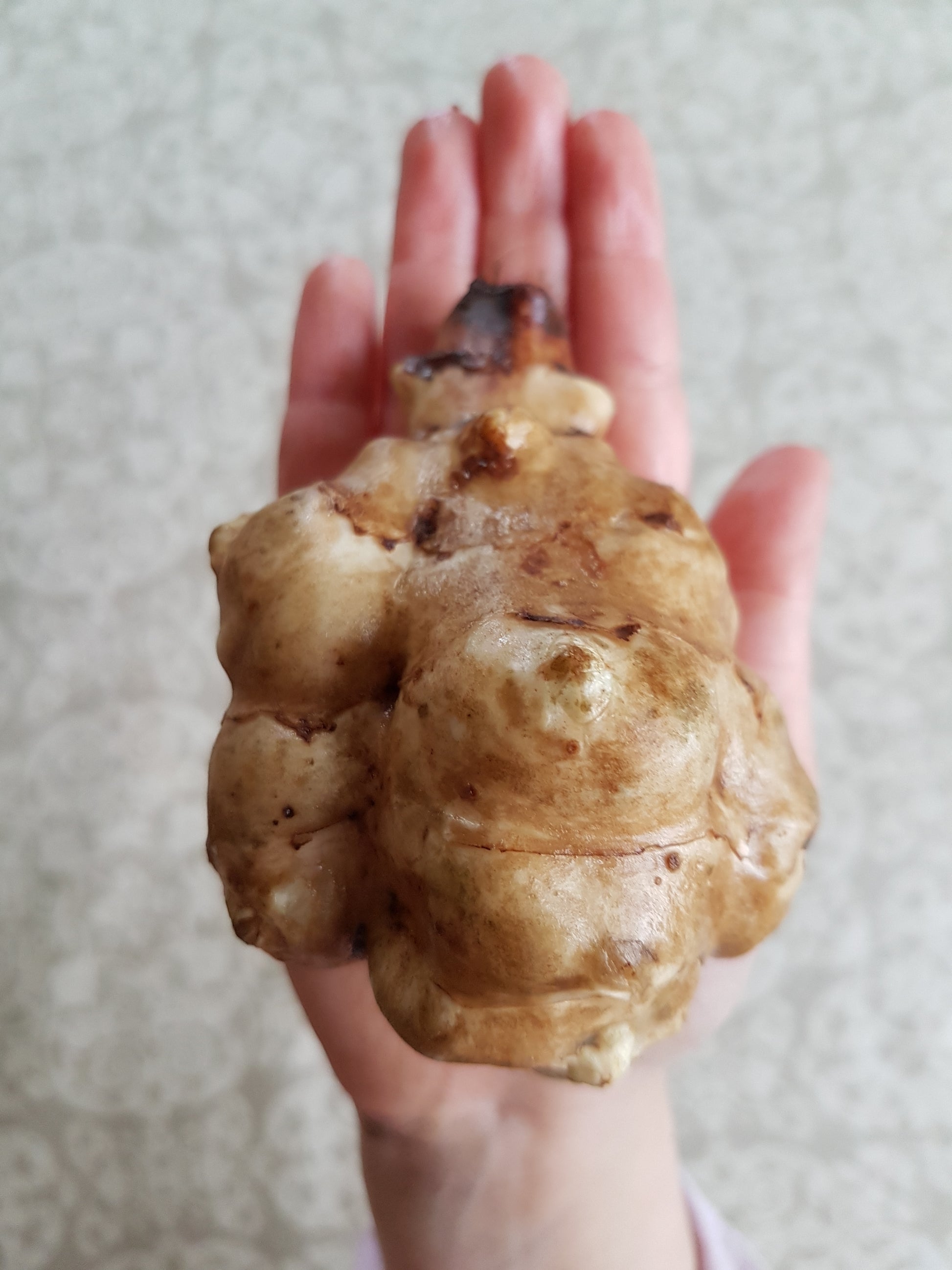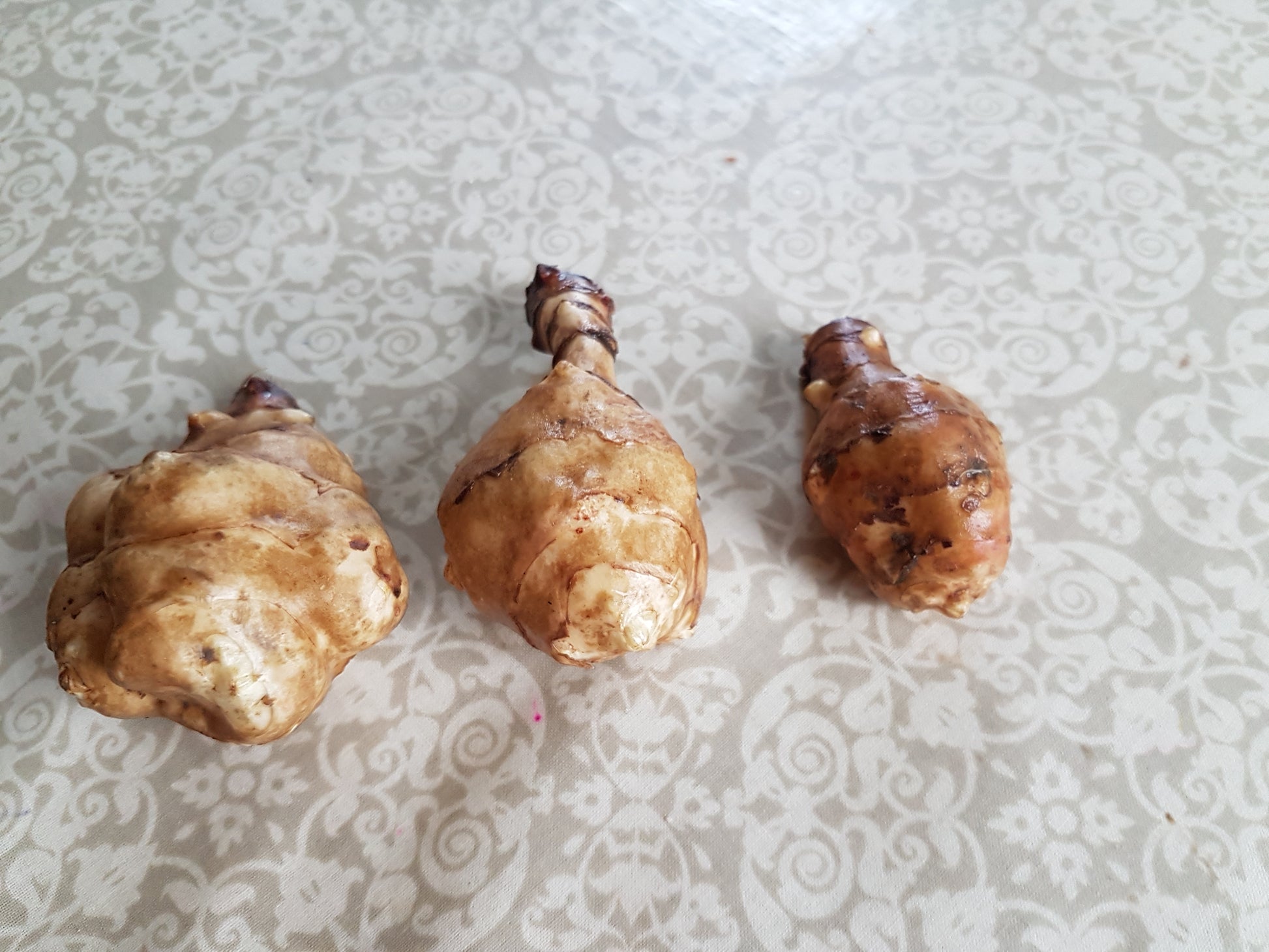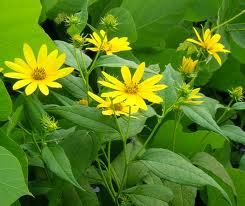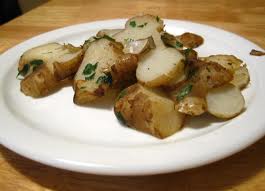Jerusalem Artichoke, Common - Helianthus tuberosus
Jerusalem Artichoke, Common - Helianthus tuberosus
Couldn't load pickup availability
Jerusalem Artichoke, aka sunchokes, topinambours, and a few other names. This is the common, knobby, large-tuber variety. This is in many ways the perfect food plant. Native to much or North America, perennial (difficult to eradicate, in fact: plant in its own area, it will spread and can get weedy), no-maintenance, and even ornamental, with yellow flowers in late summer. Tall (up to 10 feet, but usually closer to 6), it produces large, nutritious tubers. One pound will turn into at least 10 pounds after a year under the right conditions. The main advantage of this variety is its size, which makes up for its lumpy disposition. Available October-December, and again in April.
Cultivation: About the easiest garden plant imaginable. It was widely used as a survival plant in much of Europe for that reason. No known pests (except perhaps for rodents who occasionally rob the tubers), drought hardy (within reason), prolific, happy in just about any soil type (but does better and is easier to harvest in a rich, sandy loam). Stems and leaves can even be used as forage for animals. Groundhogs and rabbits are particularly fond of it. Our goats jumped their fence several times to munch on the fresh tops. 🐐
Food preparation: Countless recipes, especially if you look for French sources (under the name "topinambours"). It works well in stews and mashes, mixed with other root vegetables. It's nice in a thick, hearty stew, for instance, where the sometimes dominant artichoke aroma gets blended nicely with other flavours. But the simplest and easiest, and personal favourite, is pan fried with garlic and parsley. 😋
Ethnobotany: Widely used by North American natives peoples, it is still abundant in the wild. The wild form typically has smaller tubers, but some can get quite large. It has a long history in Europe, where it was introduced in the 1600s. It has both a somewhat lowly reputation as starvation food, because of its common use during the war and postwar years, and as a delicacy, often found on the menu of fine restaurants.
Share
